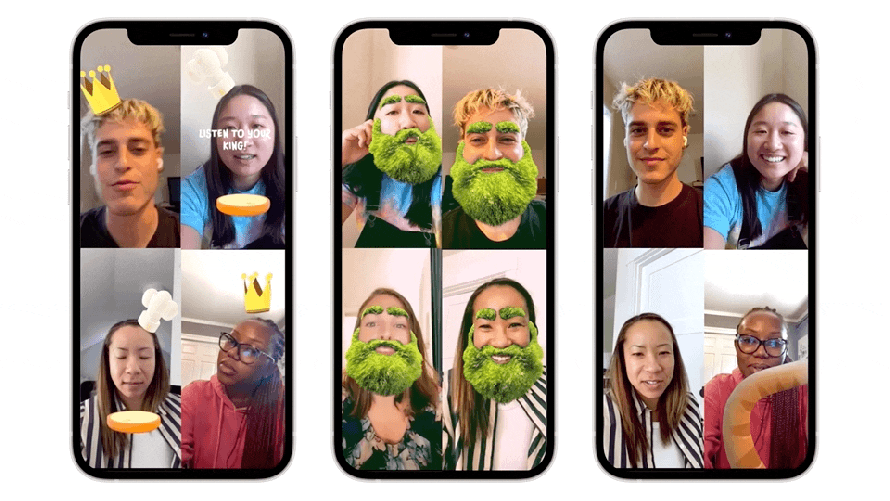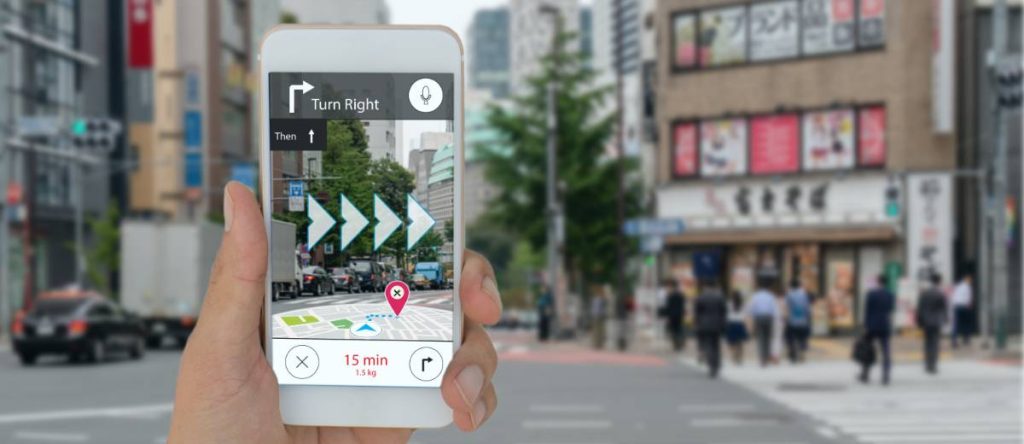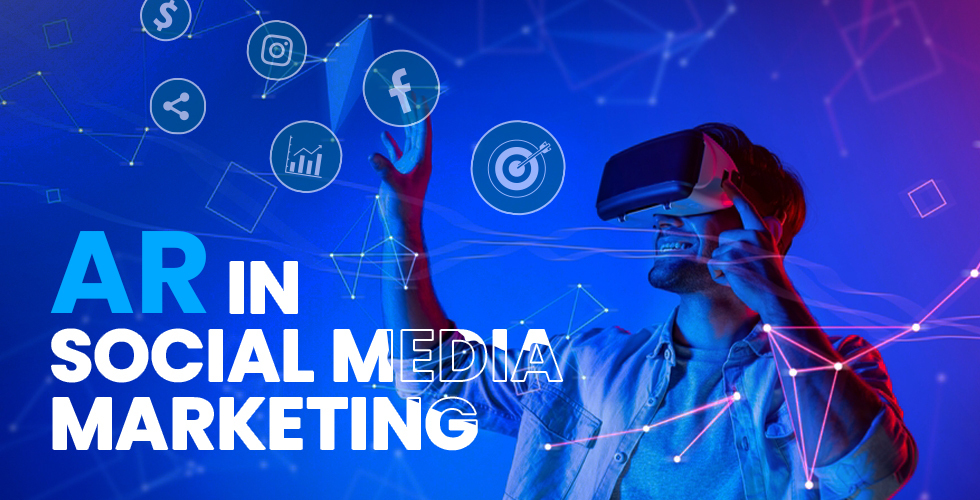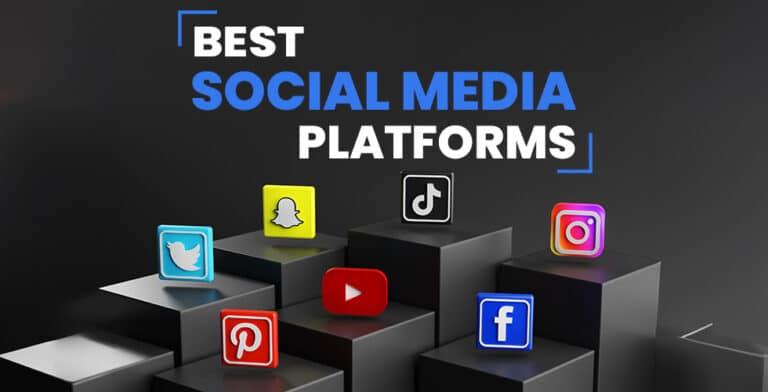AR holds significant potential for businesses, especially e-commerce companies, to enhance social media marketing and drive business growth. With AR, you can explore new avenues to engage your audience, create immersive brand experiences, and unlock innovative marketing opportunities. By the year 2024, the number of mobile users engaging with augmented reality is projected to reach an impressive 1.73 billion. Augmented Reality (AR) extends beyond games like Pokemon Go. It’s been quite a while since social media users are captivated by the allure of face filters.
How does augmented reality work?
Augmented Reality (AR) utilizes sensors like GPS, accelerometers, and gyroscopes to understand your surroundings. By accurately tracking your location and orientation, AR apps can overlay digital content onto the real world.
AR begins with a camera-equipped device (e.g., smartphone, tablet, smart glasses) loaded with AR software. Through computer vision, the software recognizes objects when the device is pointed at them. It retrieves object-specific information from the cloud and presents it as a 3-D overlay on the object. Users can interact with real-time product data using touch, voice, or gesture controls. AR adapts to user movement, adjusting the display accordingly. Different roles can view the same object with tailored AR experiences. A cloud-based 3-D digital model, the “digital twin,” serves as the bridge between the object and AR. It collects up-to-date information and enables accurate placement of information on the object within the AR experience.
Augmented Reality in Social Media Marketing
In recent years, AR has captured the attention of engineers and technology enthusiasts, igniting their imagination to push the boundaries of established technologies and envision new possibilities. With its potential to revolutionize user experiences, AR is poised to become the next big thing in the tech world. Augmented reality (AR) has emerged as a groundbreaking technology with significant implications for social media marketing, let’s see how.
Brand Promotion with Branded Filters
Face filters have become a popular trend among younger social media users. Platforms like Snapchat provide an array of augmented reality (AR) filters, enabling users to transform their appearances, whether by trying on virtual makeup, sporting unique hairstyles, or adding artistic effects to their images. The creative possibilities are endless. Moreover, businesses can seize this trend by leveraging branded filters to enhance their social media presence just like Taco Bell, Gucci, and other brands are doing.
Businesses can leverage branded filters to effectively promote their brands on social media. A notable example is Taco Bell, which created a branded Snapchat filter that turned users’ faces into tacos. This quirky AR filter resonated with users, resulting in numerous people sharing taco-fied versions of themselves, all featuring Taco Bell’s logo.
Virtual “Try Before You Buy” Experience
Traditionally, consumers preferred brick-and-mortar stores for the tactile experience of touching and trying on products. However, augmented reality is transforming the way people shop, even online. AR enables users to virtually “try on” products while browsing through social media platforms such as Instagram.
Instagram is currently testing an AR functionality for ads, allowing users to virtually see how selected brands’ products, like sunglasses or lipstick shades, would look on them. By offering the ability to virtually try on products, AR helps shoppers make more informed purchase decisions, reducing hesitations about buying. Integrating AR with social media ads can significantly boost sales for e-commerce businesses, with AR-based ads projected to generate around $13 billion annually by 2022, according to Tractica.
Driving Impulse Purchases
Impulse buying, unplanned spur-of-the-moment purchases, is increasingly common among consumers, particularly young people. Augmented reality provides a powerful tool to encourage even more impulse purchases and drive sales.
AR blurs the line between imagination and reality. For instance, when consumers see an expensive sofa in an image, they may consider it out of reach. However, with AR, the sofa can be virtually placed in its environment, creating a sense of ownership and making impulse purchases harder to resist.
Offer Immersive Experiences
Static images or standard videos have limited engagement potential. Augmented reality, on the other hand, offers users immersive experiences that captivate their attention for longer periods.
For instance, instead of using traditional billboards or regular social media ads, businesses can use AR to bring their brands to life. Snapchat demonstrated this approach with an AR-enabled billboard promoting their Snap Original show featuring Bhad Bhabie. The billboard interactively brought Bhad Bhabie to life, engaging users as if she were conversing with them in real life. Such interactive and immersive experiences can revolutionize user engagement with advertisements on social media.
Augmented Reality Examples
Facebook’s AR tool, Camera Effects, is a feature that enables users to enhance their photos and videos with augmented reality elements. With Camera Effects, users can apply various filters, masks, animations, and effects to their camera feed, creating engaging and interactive visuals. This tool allows users to personalize their content, express their creativity, and add a touch of fun to their posts. Camera Effects provides an immersive and interactive experience, bringing augmented reality capabilities to the fingertips of Facebook users.

Snapchat
Snapchat enhances its users’ everyday experiences with the help of augmented reality through its Snap Camera and Lens tools. Snap Camera allows users to apply AR filters, effects, and overlays to their camera feed, transforming their appearance and environment in real time. These filters range from playful masks and animations to interactive elements that respond to user movements.
Google Maps
Google Maps AR, also known as Live View, is an augmented reality feature that assists with navigation. By using the rear camera and GPS, it superimposes directions and details onto the display, guiding users in the right direction while walking. To access Live View in Google Maps, select walking directions and tap the “Live View” button. Lift the phone up to view the AR overlay, which identifies surroundings and provides visual cues. Keep the phone pointed at the street for accurate AR instructions, but be mindful of warnings to lower the device for safety.

Sephora
Sephora understands the challenges of online makeup shopping, especially when it comes to finding the right lip shade. To address this, they offer a virtual try-on experience using augmented reality (AR). This allows customers to see exactly how the products will look on them. Sephora’s use of AR not only benefits users but also boosts sales by attracting tech-savvy customers who become brand ambassadors, sharing their AR experiences online.
GUCCI
Gucci, being a pioneer in the luxury brand industry, made a significant investment in augmented reality (AR) for marketing purposes. They introduced an AR feature to their app that allowed customers to virtually “try on” sneakers. This innovative technology provided customers with a realistic visual representation of how their desired products would look in real life.
What are the disadvantages of augmented reality?
Augmented Reality (AR) brings excitement and innovation, but it also brings a set of growing problems, particularly in the realm of privacy. The issues go beyond data collection by social networks and include the oversharing of personal information online, creating potential risks for individuals.
Impact of Social Media and the Need to Share
Social media has undeniably transformed society, facilitating global connections and communication. However, it has its drawbacks, with one prominent aspect being our increasing compulsion to share every aspect of our lives online. The urge to post about daily experiences has become pervasive, even when unasked for.
The Influence of AR on Digital Profiles
AR has the potential to amplify our desire to curate our lives based on a perceived sense of perfection, especially as AR effects and filters become more advanced. The question arises: How will these meticulously crafted digital profiles affect us? Will they further separate our online persona from our real-life self?
Impact on Human Connections
AR is already transforming the way we interact with others. Instead of initiating conversations with strangers, AR allows us to search and message individuals online. This raises concerns about the potential harm to our ability to connect face-to-face. Will AR hinder genuine human connections, or will it enhance our sense of connectedness?
Wrapping Up
In the upcoming years, augmented reality (AR) will play a significant role in social media through games and filters. With a focus on user privacy and security, we may witness the emergence of more platforms like Spotselfie. AR will undoubtedly transform communication and interaction, and its impact can be positive if we take control. As consumers, we should actively manage our usage, considering factors like data security, social curation, and maintaining human connections.




